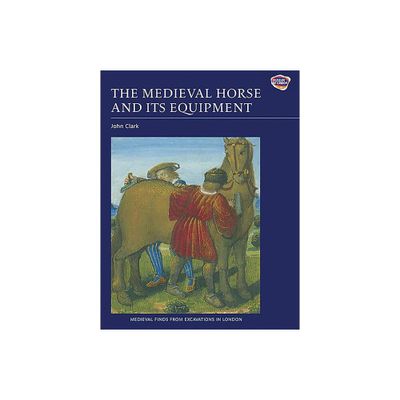Home
The Medieval Horse and its Equipment, c.1150-1450
Loading Inventory...
Barnes and Noble
The Medieval Horse and its Equipment, c.1150-1450
Current price: $36.95


Barnes and Noble
The Medieval Horse and its Equipment, c.1150-1450
Current price: $36.95
Loading Inventory...
Size: OS
*Product Information may vary - to confirm product availability, pricing, and additional information please contact Barnes and Noble
Over 400 recent finds associated with horses and excavated in London, from the utilitarian to the highly decorated, illustrated and discussed.
Whether knight's charger or beast of burden, horses played a vital role in medieval life. The wealth of medieval finds excavated in London in recent years has, not surprisingly, included many objects associated with horses. This catalogue illustrates and discusses over four hundred such objects, among them harness, horseshoes, spurs and curry combs, from the utilitarian to highly decorative pieces. London served by horse traffic comes vividly in view.
The introductory chapter draws on historical as well as archaeological sources to consider the role of the horse in medieval London. It looks at the price of horses and the costs of maintaining them, the hiring of 'hackneys' forriding, the use of carts in and around London, and the work of the 'marshal' or farrier. It discusses the evidence for the size of medieval horses and includes a survey of finds of medieval horse skeletons from London. It answersthe key questions, how large a 'Great Horse' was, and why it took three horses to pull a cart.
This is a basic work of reference for archaeologists and those studying medieval artefacts, and absorbing reading for everyone interested in the history of the horse and its use by humankind.
JOHN CLARK is Curator (Medieval) at the Museum of London.
Whether knight's charger or beast of burden, horses played a vital role in medieval life. The wealth of medieval finds excavated in London in recent years has, not surprisingly, included many objects associated with horses. This catalogue illustrates and discusses over four hundred such objects, among them harness, horseshoes, spurs and curry combs, from the utilitarian to highly decorative pieces. London served by horse traffic comes vividly in view.
The introductory chapter draws on historical as well as archaeological sources to consider the role of the horse in medieval London. It looks at the price of horses and the costs of maintaining them, the hiring of 'hackneys' forriding, the use of carts in and around London, and the work of the 'marshal' or farrier. It discusses the evidence for the size of medieval horses and includes a survey of finds of medieval horse skeletons from London. It answersthe key questions, how large a 'Great Horse' was, and why it took three horses to pull a cart.
This is a basic work of reference for archaeologists and those studying medieval artefacts, and absorbing reading for everyone interested in the history of the horse and its use by humankind.
JOHN CLARK is Curator (Medieval) at the Museum of London.


















